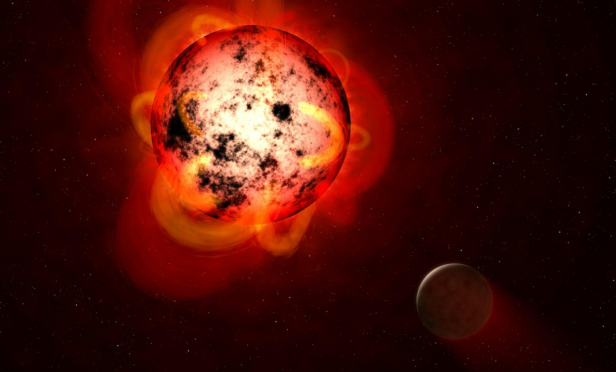Scientists make significant discovery that may help humans find alien life
A team of researchers has made a significant discovery with the most common type of star in the universe, which may make it easier to find life elsewhere.
A recent research described how the interaction between red dwarf stars and the planets they orbit may make it much simpler for astronomers to find planets that potentially host life. Red dwarf stars are the most prevalent form of star in the cosmos.
The new research, which was just released in Astrophysical Journal Letters, focuses on the planet GJ 1252b, which travels 45 light-years from our Sun to a red dwarf star it surrounds. Because of this planet’s close closeness to its red dwarf star, astronomers focused their attention on it and discovered that it lacks an atmosphere. Due to its near proximity to its host system, GJ 1252b circles its companion star twice every one Earth day, yet the intense heat it experiences makes it difficult for it to sustain an atmosphere that is suitable for life.

Closer to home, Mercury provides an illustration of a scenario similar to our own, where the Sun is making it very difficult for the planet to retain its atmosphere. There is an atmosphere on Mercury, but it is really thin since the Sun is practically blasting it away with its radiation. A far more intense version of the same event as GJ 1252b is now taking place. For instance, the surface temperature of GJ 1252b is projected to be 2,242 degrees Fahrenheit, which is hot enough to melt copper, silver, and gold.
“The pressure from the star’s radiation is immense, enough to blow a planet’s atmosphere away,” said Michelle Hill, UC Riverside astrophysicist and study co-author.
Why is this significant then? Red dwarf stars are so prevalent in the universe—there are 5,000 of them only in our solar system alone—that scientists can rule out many exoplanets that orbit them from harboring life since they lack atmospheres due to their close closeness to their host stars or surface pressure. In essence, the list of exoplanets that “may conceivably house life” would be significantly reduced, saving time in the hunt for potentially habitable worlds.
It should be noted that exoplanets that are orbiting red dwarf stars at a greater distance still have the potential to have an atmosphere and, consequently, life. Therefore, it cannot be said that astronomers have completely ruled out all exoplanets that circle red dwarf stars.
“If a planet is far enough away from an M dwarf, it could potentially retain an atmosphere. We cannot conclude yet that all rocky planets around these stars get reduced to Mercury’s fate. I remain optimistic,” said Hill.
Do not forget to share your opinion with us to provide you with the best posts !



0 Comments